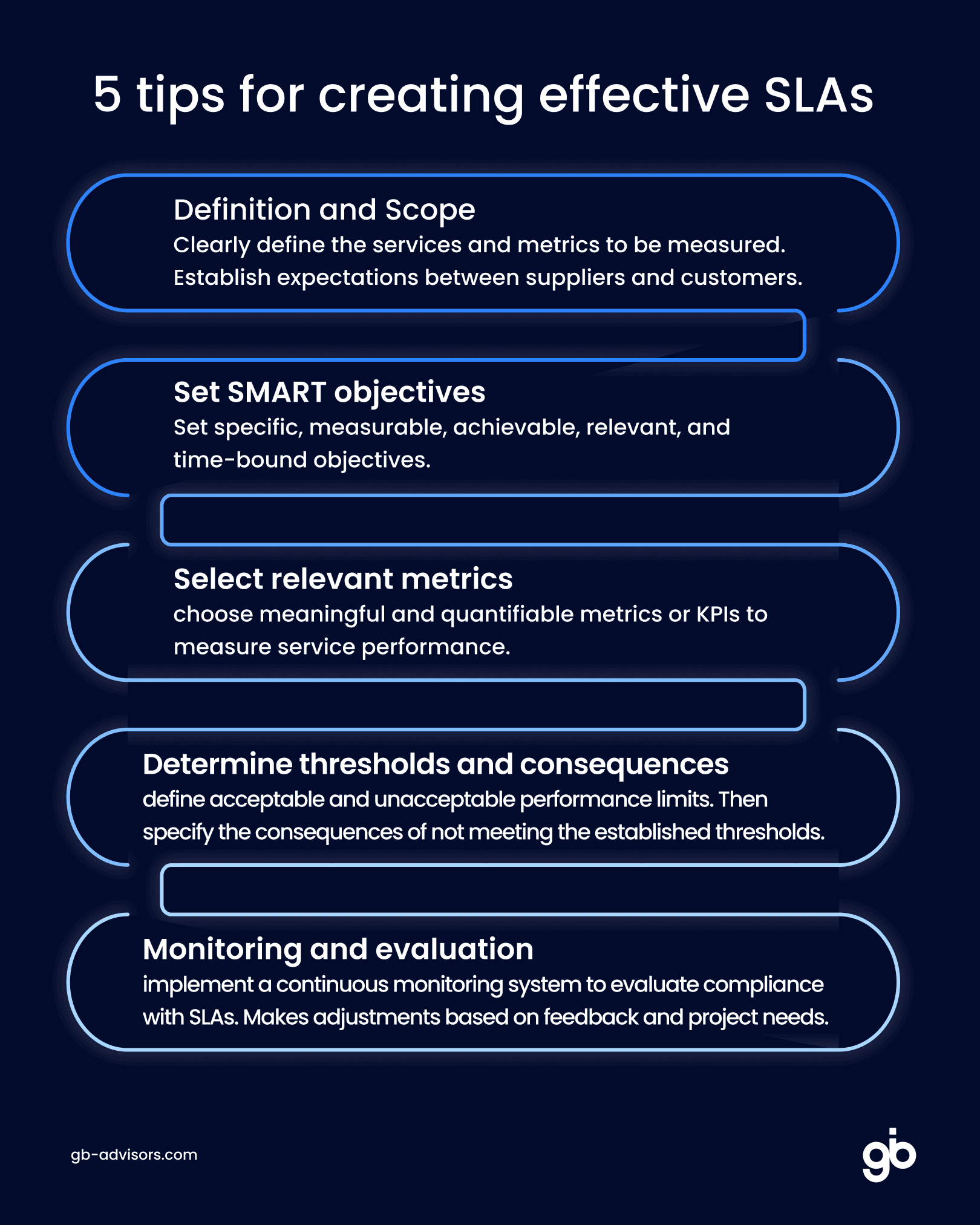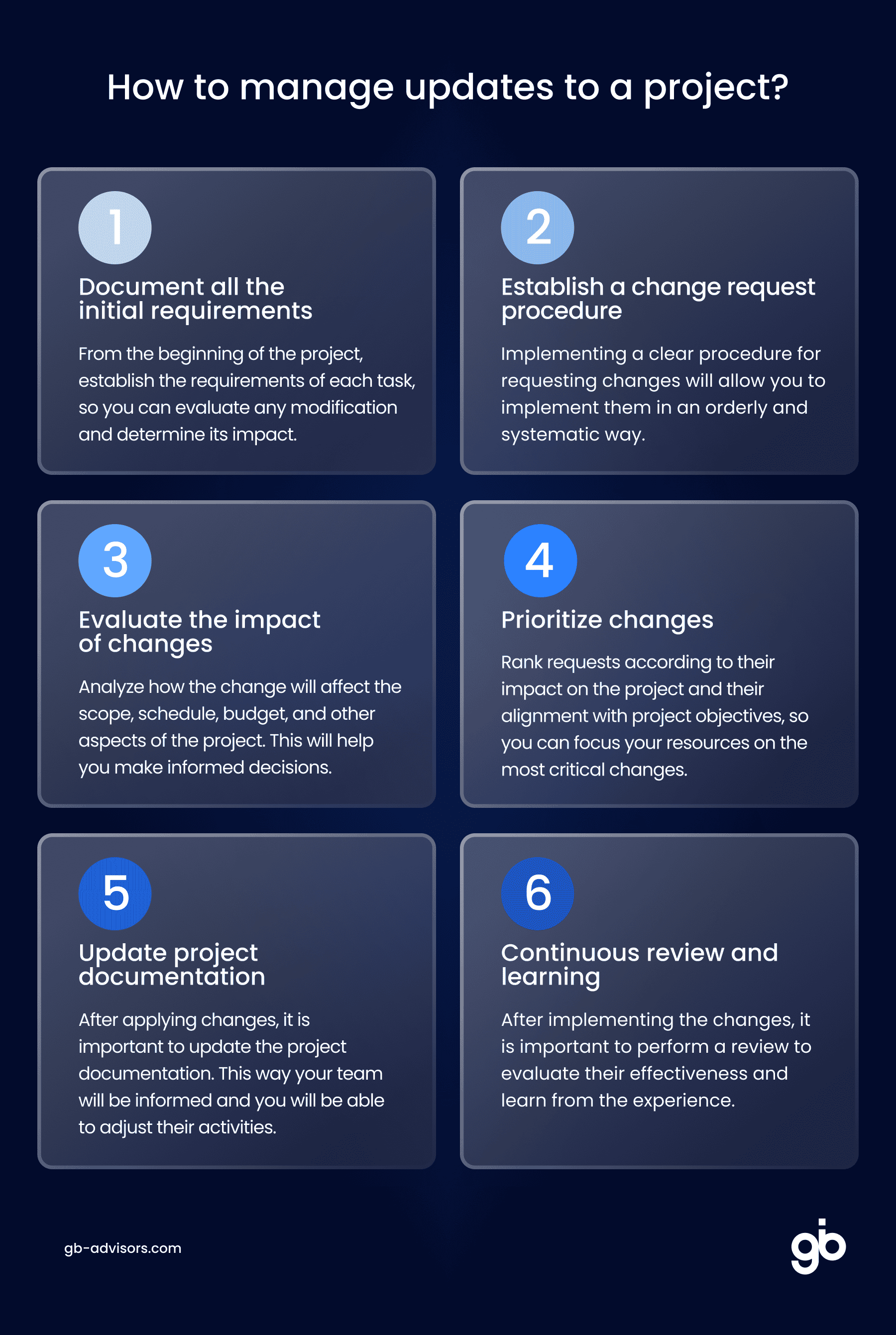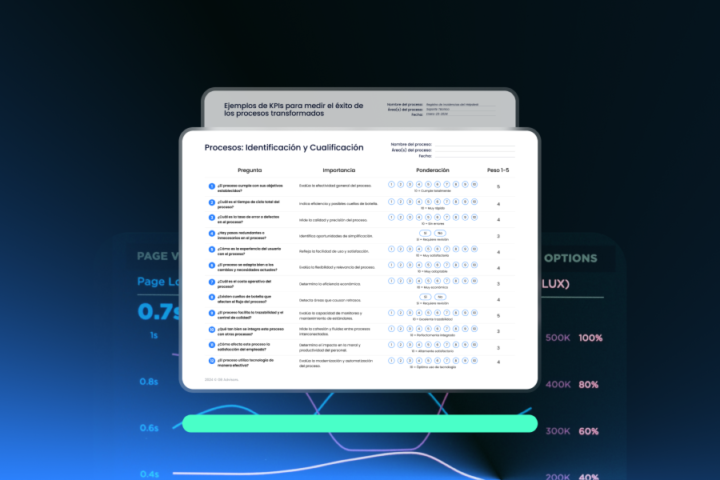All the ups and downs experienced by project managers have one common element: the stress of SLAs compliance and the consequences of not doing so. This pressure is further intensified when these professionals face limited resources and high stakeholder expectations.
However, this tension is not only a challenge, it is also an opportunity for your company to excel. If you know how to take advantage of this situation, it can drive continuous improvement, strengthen team confidence, and solidify your reputation in the industry.
In this blog post, we’ll explore five key steps project managers can take to ensure compliance with SLAs, thereby guaranteeing customer satisfaction.
Let’s start by analyzing how SLAs influence the success of our projects.
Why is SLA compliance important in project management?
SLAs are important in project management for several reasons:
They establish clarity about services: by having clear expectations about the services to be provided, the quality standards, and how performance will be delivered, you can avoid misunderstandings and ensure alignment between the client and the team.
Ensure customer satisfaction: compliance with SLAs ensures that delivery times are met within the agreed deadlines, which strengthens the relationship with customers and contributes to efficient time and resource management.
They allow you to measure team performance: by monitoring SLAs you can obtain key indicators or KPIs that will help you to monitor your team’s performance. Thus, it will make it easier to identify areas for improvement and implement adjustments to drive the project forward.

There are several ways to monitor project SLAs, however, IT tools always play a crucial role. This brings us to the next point.
What is the importance of IT solutions in SLAs compliance?
Information Technology (IT) is a crucial component for the success of any project. In this context, it is important to understand how IT tools contribute to SLA compliance:
Automation and efficiency: they enable the processes automation within a project. This means that tasks can be completed faster and more efficiently. Thus this contributes directly to meeting the deadlines set in the SLAs.
Continuous monitoring: it tools help teams to monitor the performance of services and applications in real-time. This is vital to know the percentage of compliance with the SLAs and also allows detection of any problem that may slow down the progress of the projects.
Incident and problem management: when complications arise that can affect compliance with SLAs, IT tools allow you to manage incidents and problems effectively. This involves identifying the root cause of the problem, restoring service, and implementing solutions to prevent the incident from reoccurring in the future.
Information Security: with an IT tool you can establish standards and norms to protect sensitive data and ensure compliance with regulations and security standards. Therefore they contribute directly to SLA compliance and customer confidence in the organization.
Support and maintenance: they provide continuous technical support and perform preventive maintenance to ensure the optimal operation of systems and services. This includes applying updates to work management platforms, resolving technical issues, and optimizing system performance.
From process automation to information security, IT tools play an integral role in ensuring compliance with SLAs. Below, we’ll take you through the steps to manage these agreements effectively for your company’s projects.
5 steps to ensure compliance with SLAs in project management
1. Clearly define project SLAs
A clear and detailed definition of SLAs is essential to establish realistic expectations about the scope and execution of a project. This process involves accurately detailing response times, availability levels, quality of work, and other key standards that will guide service delivery.
By having these aspects well defined, both your team and the client will be able to:
- Understand the conditions under which the project will be carried out.
- Achieve greater alignment with each party’s expectations.
- Collaborate efficiently and proactively.
- Continually evaluate the performance and quality of the service.
For example:
Let’s say your company hires a cloud service provider to host an e-commerce application. From the beginning, they established clear SLAs that include 99.9% monthly availability and a response time of no more than 2 seconds.
The importance of these SLAs is evident when the application suffers downtime of 2 hours, exceeding the maximum of 43 minutes allowed per month. Thanks to the previously agreed SLAs, your company can quickly manage the situation with the provider, demanding compensation as established.
If the SLAs had not been clear from the start, your company would have faced significant difficulties in resolving the dispute. This shows the importance of these agreements in meeting expectations and ensuring the quality of critical services.
2. Integrate digital tools to monitor the SLAs
Having technology, such as ITSM software, allows you to gather all your project information in one place for easy reference. In this way, it simplifies the tracking process and ensures that the whole team is on the same page when it comes to service delivery.
For example:
Let’s say you have a B2B SaaS company that developed a help desk software to simplify customer service for any organization.
Your sales team is about to meet with a potential customer to demo the tool. However, for this, they need help from the company’s certified support technicians.
How can the sales team ask for help? They will most likely do so via email or private chat, which will make it difficult to track the management.
On the other hand, if you have an ITSM tool, such as service desk software, you could make this request in an automated way. In addition, each area will be able to configure everything related to their services, from compliance with SLAs to the requirements for making the request or providing the service.
What happened to the demo?
If you had an ITSM tool, the demo should have gone off without a hitch:
- The request reached the service provider within seconds.
- Your sales team got a response in less than an hour (as per the SLA).
- Communications about the request are centralized in the ITSM tool, providing greater traceability and collaboration.
As a result, everyone involved was able to be aware of what needed to be done and under what parameters, as there was no room for miscommunication.
3. Reduce business risks
How can you reduce the risks associated with a project? The best way is to detect and address them before they become problems. By integrating an IT tool into SLA compliance, you will be able to identify difficulties and deficiencies in time.
With the help of trend analysis and predictive reporting, you will be able to address these problems proactively, before they negatively affect your business.
According to a study conducted by McKinsey & Company, KPIs also allow you to identify key areas where you can optimize resources, such as time, money, and human talent. This, in turn, results in greater project efficiency and profitability.
In addition, the analysis of this information can provide insight into potential growth opportunities. Which, in the long run, will have a positive impact on the continuous improvement of the organization’s processes.
For example:
Suppose the first response time for a service request from your Legal department is about to expire. In this case, all employees of that team can receive an automatic notification to take action before breaching the SLA.
And… What if the requested delivery date is not met?
The case can be automatically escalated. The area manager will receive a notification that will allow him to mitigate any risk arising from this non-compliance.
On the other hand, automation can be applied not only to notifications. With an ITSM tool, you can also automate the process of creating a request. In this way, it will be enough to fill out a form and, in seconds, the ticket and all the related information will reach the supplier.
In addition, leaders will be able to know if a deadline is about to expire. They will also know if there was no first response to the request or the team’s performance.
What do you gain from this?
Employees are more focused on the tasks that their roles demand, especially those whose projects depend on collaboration with other areas of the organization. You will also have trends and predictive analytics to identify difficulties and deficiencies before they have a negative effect on the business.
The information needed for any analysis will come from performance data based on SLA compliance. As a result, you will be able to make objective rather than subjective decisions, which in turn will increase your margin of success.
4. Simplify changes in applications
To streamline updates and modifications to a project, it is essential to establish a clear and efficient process to manage these changes in an organized and controlled manner. In the following infographic, we show you the steps to simplify this process:

For example:
Let’s say your company’s software development team has an SLA for the delivery and implementation of the landing pages they develop for your website, with a limit of 5 business days.
Everything goes according to plan, until the marketing team decides to make significant changes to the deliverable, but informs the development team only two days before the SLA deadline. We can already imagine the consequences of this lack of communication, can’t we?
How can you avoid this scenario?
The key is smooth communication and proactive management of change requests. Imagine having a centralized platform where both the marketing team and the development team can log and track all project-related updates and changes.
On this platform, data such as request status, deadlines, and any other relevant information could be included. This centralization would allow for a global view of all ongoing requests. Which also facilitate early identification of potential roadblocks and informed decision-making.
By adopting this strategy to manage changes, you can minimize risks and ensure that the SLAs established in the project are met. This benefits your company by maintaining customer satisfaction and improving internal collaboration.
5. Monitoring and continuous improvement
By constantly monitoring the SLAs you get a clear view of the team’s performance in real time. This is vital, as it allows you to detect problems before they escalate and seriously affect project progress.
Continuous measurement also provides a range of data that you can use to review and adjust the terms of SLAs. Thus, you can maintain transparency with your customers and detect opportunities for improvement. This can also help you identify areas that require investment in technology or infrastructure.
For example:
Let’s suppose your company uses a tool to monitor the data storage service infrastructure. One day, the system detects that the response time increased due to the high demand for services. So it automatically sends an alert to the support team.
Thanks to the early warning, the technicians can intervene quickly. They discovered that the increase in latency was due to overload on one of the servers. Then, they quickly redistribute the load and add additional resources to handle the increased demand.
The result? Timely intervention minimizes the time during which service was below the SLA standard. The infrastructure stabilizes within minutes and response time is back within the agreed-upon limit.
But… What would have happened if an alert had not been sent?
Without an effective monitoring system, this problem could have gone unnoticed. Technicians would have found out only when customers started to complain. This could have led to an SLA violation, affecting customer satisfaction and possibly resulting in financial penalties.
In this example, we can appreciate how continuous monitoring and the ability to respond quickly can prevent major problems. This also boosts customer confidence, and ensure compliance with project SLAs.

Conclusion
Ensuring compliance with SLAs in project management requires an analytical and strategic approach. Clear and continuous communication is essential to set realistic expectations and foster collaboration among all stakeholders.
Regular monitoring of project progress and team performance facilitates early identification of deviations and strategic decision-making. This, in turn, will help you meet established goals and maintain a high level of efficiency and quality in project execution.
The strategies described in this article are not just steps to follow, they are part of a strategic approach that should be integrated into the culture of any organization that seeks to lead in its field. Adopting and refining these principles will enable you to make significant improvements in customer satisfaction and optimize your company’s operations.
If you want to implement these improvements in the management of your projects, our team of experts is ready to help you. Contact us and receive a free consultation.



